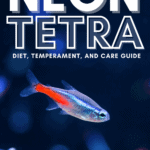Neon tetras have been firm favorites in freshwater aquariums since they first appeared in the 1930s. These brightly colored sparkling jewels are peaceful and relatively easy to care for, making them ideal for a beginner’s community tank.
So, what size tank do Neon tetras need? Can you keep Neons with a betta fish? And what do Neon tetras eat?
Read this guide to learn everything you need to know about caring for Neon tetras!
What Is A Neon Tetra?
Neon tetras are small tropical fish that have been favorites in freshwater aquariums for many decades. These beginner-friendly, peaceful fish make a sparkling addition to a peaceful community tank, and you can breed them at home, too.
Scientific Name
Paracheirodon innesi
Common Name (species)
Neon tetra, Neon fish
Family
Characidae
Origin
Peru, Colombia, Brazil, Amazon Basin
Diet
Omnivore
Care Level
Omnivore
Activity
Active, schooling species
Temperament
Peaceful
Tank Level
All areas, but prefers the middle water column
Minimum Tank Size
10-gallon
Temperature Range
Tropical 68° to 77° F
Water Hardness
3 to 25 dGH
pH Range
5.0 to 8.0
Filtration/Flow Rate
Well-filtered water and a moderate flow
Breeding
Egg scatterer
Compatibility
Peaceful community fish
OK, for Planted Tanks?
Yes
History and Origins Of The Neon Tetra
Neon tetras come from the tropical freshwaters of the Pantanal of Mato Grosso do Sul, Paraguay River basin, Rio Taquari, and Brazil.
There are several popular types of Neon tetras, including the following:
- Longfin Neon tetra
- Diamond Head Neon tetra
- Albino Neon tetra
- Red Neon tetra
- Gold Neon tetra
- Green Neon tetra
- Black Neon tetra
The Neon tetras’ natural habitat is slow-moving, blackwater river tributaries that are dimly lit by overhanging forest canopies. These colorful fish live in massive schools, feeding on tiny worms, crustaceans, and plant matter.
Average Lifespan Of A Neon Tetra
In the wild, adult Neon tetras can live for up to ten years, although two to three years is more common in tank-kept fish.
Neon Tetra Size
All types of Neon tetras grow to measure around 1.5 inches long.
Activity Level and Behavior
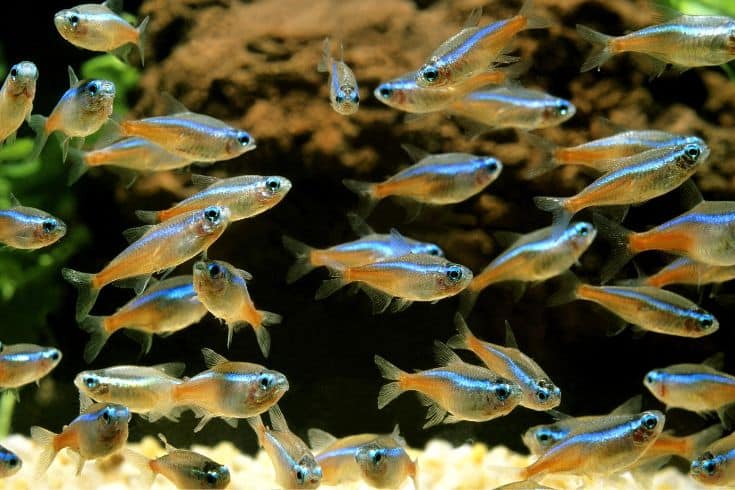
Neon tetras are schooling fish that do best when kept in large groups of at least six. Usually, Neons show their brightest colors when they feel secure and relaxed, whereas stressed fish often look faded and lack sparkle.
These lively fish love to school together in the central area of the water column, flitting around among your plants or darting to the water’s surface to grab a morsel of food.
Compatibility And Tankmates
Neon tetras are excellent fish for community tanks, being peaceful creatures that get along well with most other species.
Some hobbyists report fin-nipping behavior in their Neon tetras, especially when the tetras are kept with fish that have trailing fins, such as bettas. Now, I’ve kept several different varieties of Neons over the years, including Black neons, Diamond Head neons, and Green neons, and I’ve never seen any nipping going on, even when I kept the tetras with a betta fish.
Perhaps it’s just the luck of the draw, although I did keep large groups of 12 tetras, so it could be that the fish are happiest and more settled when kept in big schools. You’ll enjoy a much better display if you can keep big groups of these brilliant little fish, so that’s a win-win!
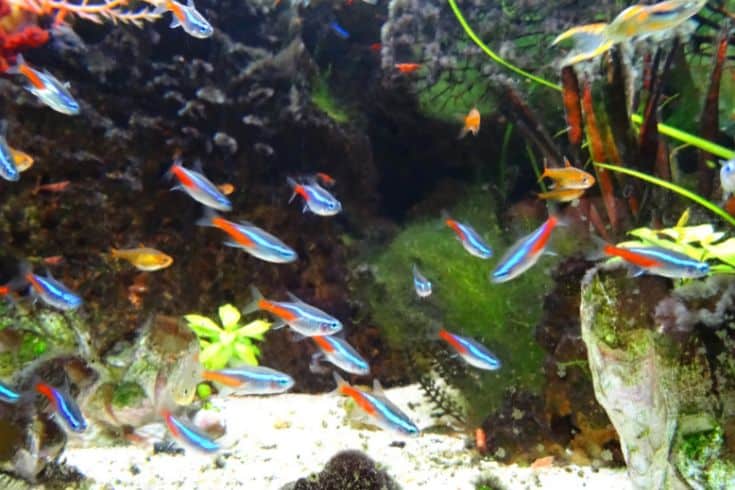
So, you can keep Neon tetras with species such as Platys, Mollies, Endler’s livebearers, and the like. Bottom-dwelling fish, such as Corydoras catfish or Otocinclus catfish, also make good choices of compatible fish.
Snails and shrimp are good tank mates for Neons and can help to keep the tank clean and tidy by cleaning up leftover food, detritus, and algae, making these invertebrates a good choice for fish keepers.
Fish To Avoid
Ideally, you should avoid keeping large, aggressive fish that might try to make a meal of your tetras. As mentioned earlier, it’s sensible to steer clear of adding fish with long, trailing fins that could tempt the tetras to nip them.
Feeding Requirements For Neon Tetras
Neon tetras are straightforward to feed. The fish enjoy an omnivore diet of tropical fish flakes or pellets, with some frozen foods, such as bloodworms, daphnia, brine shrimp, and the like.
How Much And How Often To Feed
To keep your fish healthy and your aquarium water clean and safe, don’t overfeed your fish!
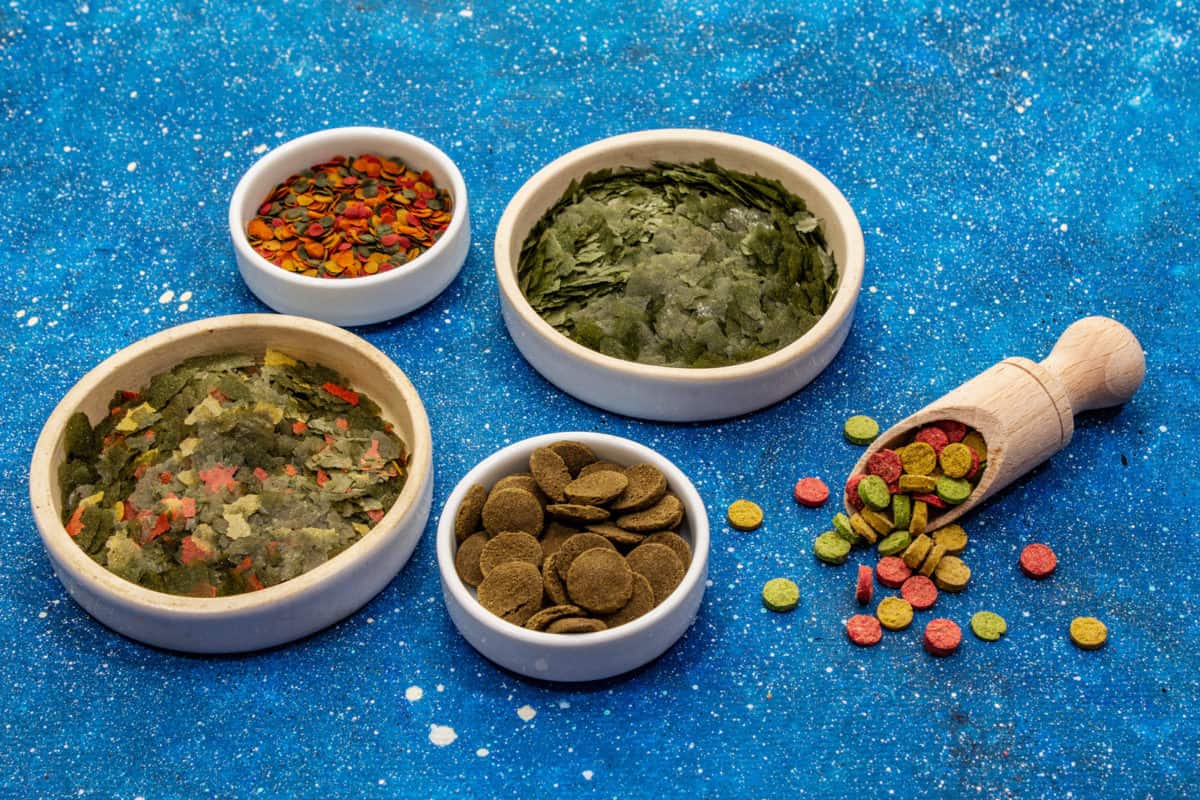
Neon tetras benefit from daily feeding in the morning and evening, offering them only what they’ll clear in a minute or two.
Captive Environment Requirements For Neon Tetras
Tank Size
You can keep a group of six to ten Neon tetras in a 10-gallon tank, although you’ll need a bigger aquarium than that if you want to keep a community setup.
The best choice of tank shape is long rather than tall so that the fish have plenty of schooling space, and a lid is recommended to prevent escape attempts!
Water Conditions
Wild Neon tetras live in what’s called “black water.” To achieve that environment in the tank, you can add Indian almond leaves to the substrate surface or filter the water through peat.
A gentle current is best for these tiny fish, so use a canister filter, and cover the filter intake with mesh or foam filter media to prevent the tetras from getting sucked into the filter.
Lighting
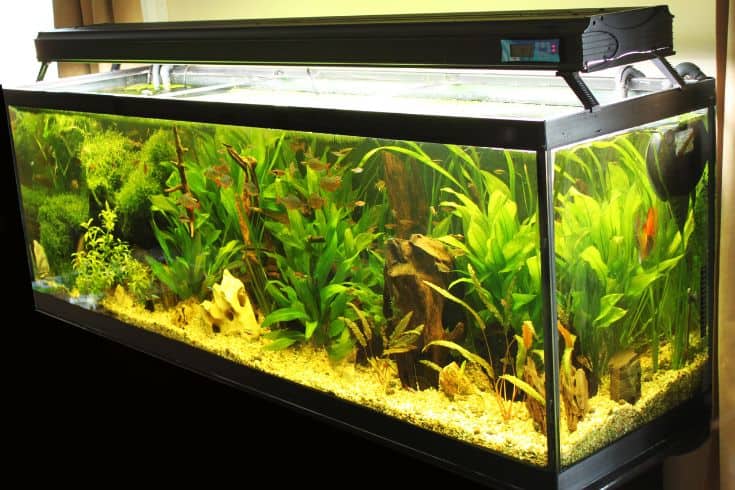
In nature, Neon tetras live in a dark, heavily-shaded environment, and the fish will love it if you can recreate that vibe in their tank. Stick to subdued lighting to relax the fish, and use a dark-colored choice of a substrate to make the tetras’ colors really pop.
Tank Setup
Tetras benefit from a densely planted tank with plenty of places to hide in and explore. Pieces of driftwood, tangled roots, and rocks create a natural look that fits these fish well.
Water Parameters
Neon tetras are tropical fish that need warm water, ideally between 68° to 77° F. They can tolerate a wide pH range of between 5.0 and 8.0 and a water hardness of 3 to 25 dGH.
Maintenance
Keep the tank clean and well-maintained for the tetras’ optimum health.
For a clean freshwater tank setup, you must use an aquarium vacuum cleaner to remove fish waste and organic debris from deep within the substrate and around the tank bottom while performing a weekly water change of around 25 percent to dilute nitrates.
Clean the filter unit once a month, and replace the filter media as necessary in line with the manufacturer’s recommendations.
Trim your aquarium plants to remove broken stems and dead leaves.
Health And Disease
When it comes to the different types of tetra fish, Neon tetras are generally hardy, although they can be prone to a few common tropical fish diseases.
In addition, Neon tetra disease is a big killer of this species, so be sure to quarantine any new tetras you buy for a couple of weeks before adding them to your main tank until you’re sure they’re healthy.
Signs Of Healthy Neon Tetras

Neon tetras are active fish that school together and explore their surroundings.
These tetras are vibrantly colored and should appear slightly plump. The fish should come to the surface at feeding times and have a healthy appetite.
Red Flags
There are a few red flags and visible symptoms to watch out for that could indicate health problems for your Neon tetras:
- Inactivity
- Poor appetite
- Weight loss
- Not schooling
- Hanging at the surface
- Loss of bright colors
Torn fins, skin ulcers, swellings, and rubbing against tank decorations and the substrate are also visible symptoms of diseases.
Common Diseases And Treatments
Health Issue
Ich (White Spot Disease)
Symptoms or Causes
Ich is a very common disease that’s caused by an aquatic protozoan parasite.
Fish infected with Ich develop a sprinkling of tiny white spots on their fins, gill covers, and bodies. They also flash against the gravel and other solid objects in the aquarium.
Suggested Action
Raise the water temperature to 82o F for three days. Use an OTC White Spot Disease medication to treat the tank.
Health Issue
Flukes
Symptoms or Causes
Flukes is the term used to describe various types of external fish parasites. These macroparasites can often be seen with the naked eye attached to the fish’s skin or gills.
Suggested Action
Treat the fish tank with an OTC antiparasitic medication.
Health Issue
Fungal infections
Symptoms or Causes
White fluffy growths on the fish’s body, mouth, and head.
Suggested Action
Quarantine infected fish, and treat with an antifungal medication.
Health Issue
Bacterial infections
Symptoms or Causes
Sores and ulcers on the body and head, ragged, bloody fins.
Suggested Action
Treat the tank with OTC antibacterial treatment.
Breeding Fish
You can sometimes breed Neon tetras in captivity, although success is not guaranteed.
To prevent the eggs and fry from being eaten by other fish, we recommend that you set up a dedicated breeding tank. The easiest way to breed Neons is to keep a large group of fish with a ratio of two females to one male.
Once the fish reach nine months of age, they are ready to start spawning.
Spawning Tank
You can breed Neon tetras in 20-gallon freshwater aquariums.
Fill the tank with around 5 to 6 inches of water over a shallow bed of gravel substrate, and add some clumps of live plants and a spawning mop. Keep the lighting dim to prevent fungus from infecting the eggs and fry.
You can sometimes trigger spawning by keeping the water temperature around 75o F and slightly acidic with a pH of between 5.0 and 6.5. Reduce the water hardness to 1 to 2 dGH, and use a small sponge filter to create a gentle flow and keep the water clean.
Spawning
Spawning usually happens in the morning, when the female fish scatter around 130 eggs across the spawning mop and plants.
Once the male has fertilized the eggs, the parents should be removed from the tank to prevent them from eating the eggs and fry. It usually takes around 24 hours for the eggs to hatch, and the fry is free-swimming in around three to four days.
Start by offering the dry liquid fry food and infusoria. When the baby Neon tetras grow large enough, you can feed them baby brine shrimp and finely powdered fish flakes.
Availability
You can buy Neon tetras in almost every fish and pet store for a few dollars per fish. It’s usually more cost-effective to buy a group of these fish, which is ideal since they must be kept in a group.
Neon tetras are sometimes mistaken for the slightly larger Cardinal tetra, but those fish are best kept by experienced aquarists since they are highly sensitive to fluctuations in water chemistry and conditions.
FAQs
In this part of our guide, we answer some of the most frequently asked questions about Neon tetra care.
Q: Are Neon tetras hard to keep?
A: Neon tetras are a relatively easy-to-keep breed of fish and are suitable for beginner fish keepers as long as you provide the fish with their preferred water parameters, feed them correctly, and keep the tank clean.
Q: Do Neon tetras glow in the dark?
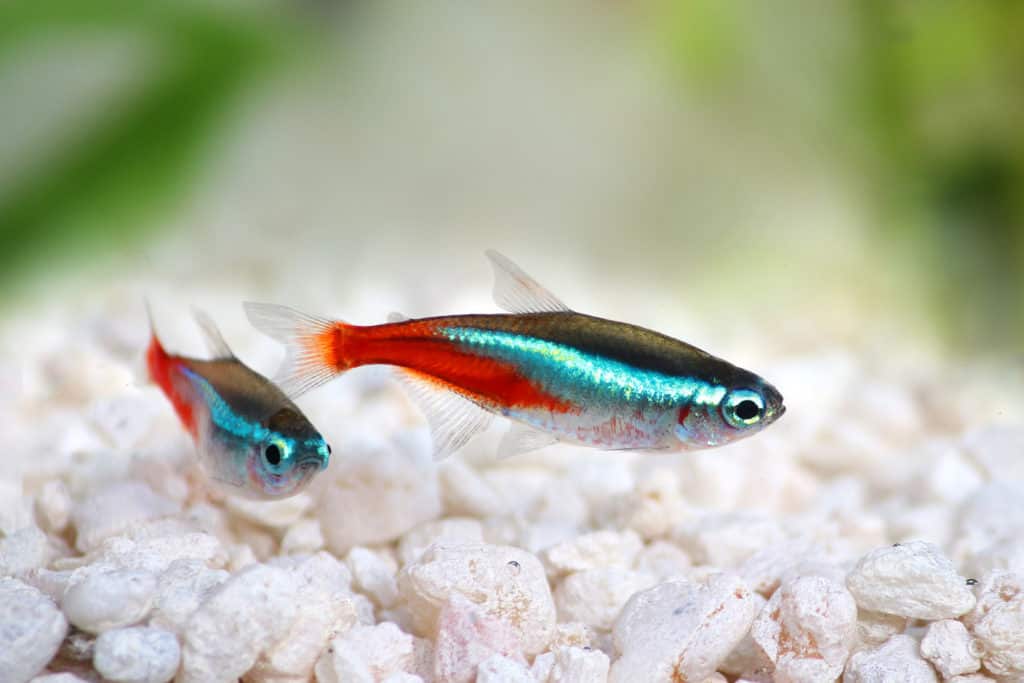
A: Neon tetras don’t glow in the dark. However, their vibrant, iridescent colors and reflective scales certainly make the fish stand out against a dark background and lush planting.
Q: Can Neon tetras live with a betta?
A: Yes, you can keep a large group of Neon tetras with betta fish in freshwater aquariums. However, some aquarists report incidents of fin-nipping involving their Neons, so you should keep an eye on things in the tank and remove any offenders that are hassling your betta.
Final Thoughts
Did you enjoy our guide to keeping Neon tetras? If the article is helpful, please remember to share it with other avid aquarists!
Neon tetras are tiny tropical aquarium fishes that are a firm favorite with fish keepers. These swimming jewels are easy to care for, and a large school of Neons makes a sparkling addition to a beginner’s community tank.
Do you keep Neon tetras with your betta fish? How do they get along? Tell us about your fish in the comments box below.
